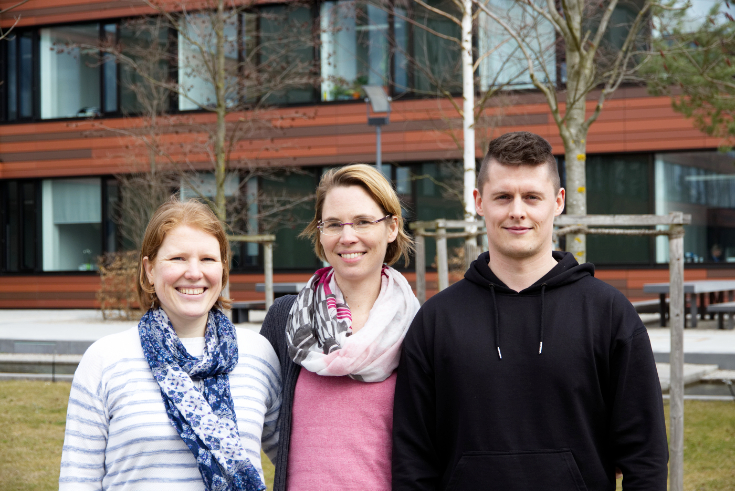The FUS protein goes astray
Pathological aggregates of the FUS protein in specific areas of the brain are believed to contribute to the development of the neurodegenerative diseases frontotemporal dementia (FTD) and amyotrophic lateral sclerosis (ALS). Normally, FUS localizes to the cell nucleus, where it regulates – together with other factors – gene expression and mRNA processing. However, the transport of FUS into the nucleus is impaired in ALS and FTD patients, which results in so called “phase separation” and subsequent aggregation of the protein in the cytoplasm of neurons.
Dorothee Dormann together with researchers of the BMC now revealed two novel regulatory mechanisms that are counteracting the disastrous aggregation of FUS in the cytoplasm: The team discovered that the phase separation and aggregation of FUS is prevented by a nuclear transport receptor, which binds to FUS in the cytoplasm and is responsible for import of FUS into the cell nucleus. Surprisingly, this transport receptor has an additional, very important function, namely to prevent phase separation and aggregation of FUS in the cytoplasm. Furthermore, the researchers could show that a small chemical modification on the FUS protein, so called methylation, counteracts phase separation and aggregation of FUS. Exactly these two regulatory mechanisms are known to be compromised in ALS and FTD patients with FUS aggregates in the brain: In ALS patients, genetic mutations in the FUS gene result in reduced binding of FUS to its nuclear transport receptor, whereas in FTD patients the chemical modification (methylation) of FUS is impaired.
The researchers report their findings, which were achieved in a collaboration with partner groups at the Helmholtz Center in Munich, the German Center for Neurodegenerative Diseases (DZNE) and the Universities in Graz and Bern, in the renowned journal Cell.
(Cell, 2018)
Dorothee Dormann is a researcher at the Institute for Cell Biology of the BMC since 2014 and heads an Emmy-Noether Junior Research Group. In addition to fellowships by the Ernst Schering Foundation, the European Molecular Biology Organization (EMBO) and the Robert Bosch Foundation, she received the Heinz-Maier-Leibnitz Award of the German Research Foundation (DFG) in 2014 for her work on the molecular mechanisms of neurodegenerative diseases.

Dorothee Dormann (in the middle) and the two first authors of the publication: Saskia Hutten (left) and Mario Hofweber (right)

